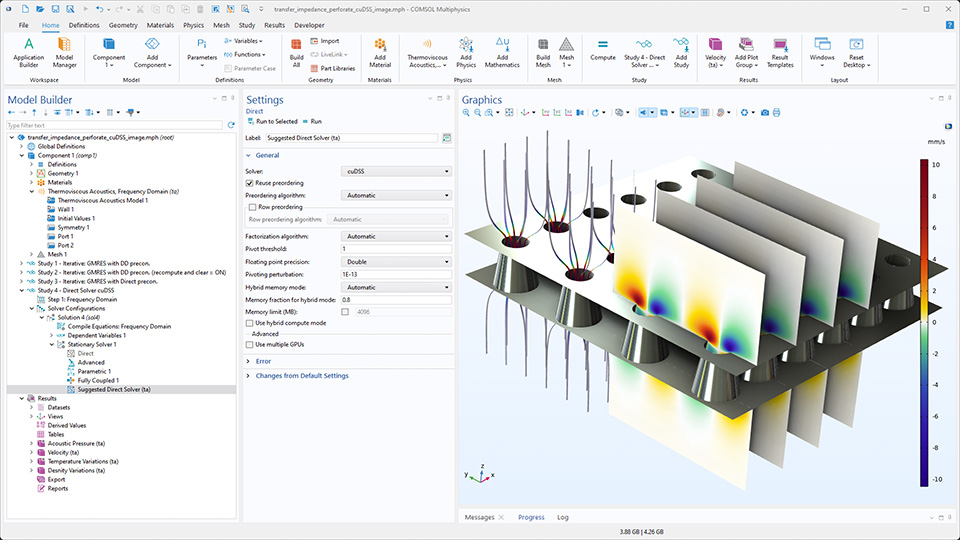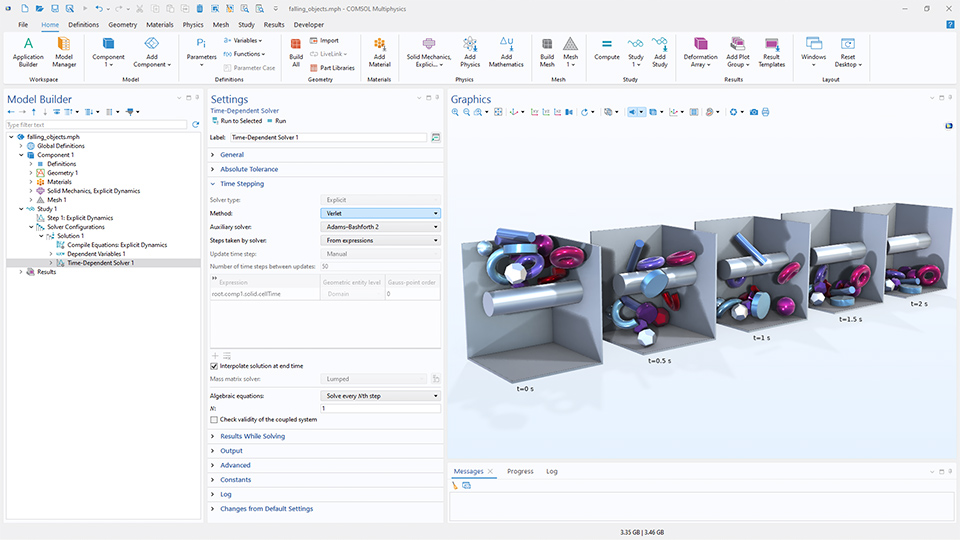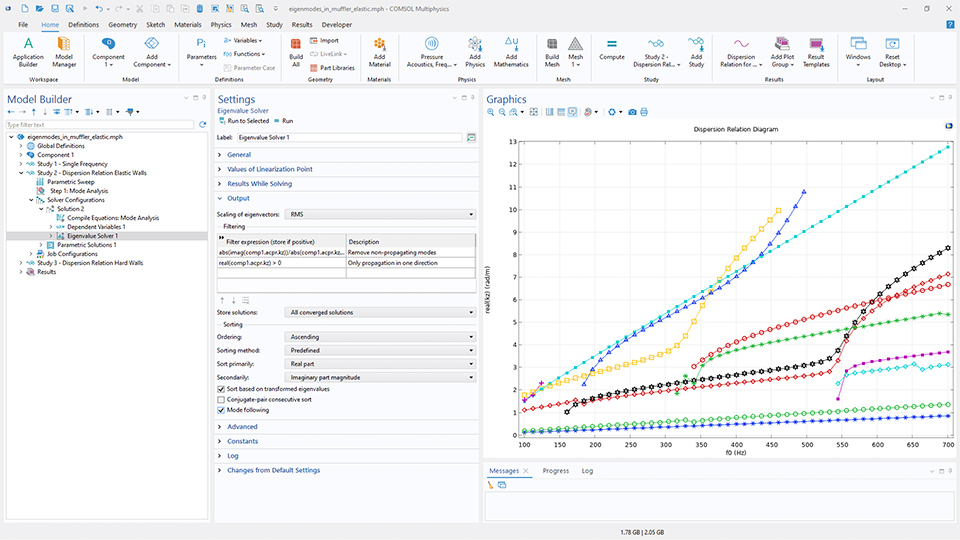Study and Solver Updates
COMSOL Multiphysics® version 6.4 introduces new solver capabilities for significant performance improvements. Highlights include a GPU-based sparse direct solver and support for multiple GPUs for time-explicit pressure acoustics. New functionality for explicit structural dynamics enables faster and more robust nonlinear structural analysis, supported by several improvements to the explicit time-stepping solvers. Additionally, eigenfrequency studies now support mode tracking, allowing automatic identification and continuation of eigenmodes as model parameters vary. Learn more about these updates below.
Direct GPU Solver
The NVIDIA CUDA® direct sparse solver (cuDSS) is now available and provides substantial speedups across a wide range of applications. By leveraging both CPU and GPU resources, cuDSS can significantly reduce computation times compared to traditional CPU-based sparse solvers.
The solver integrates seamlessly with the existing solver framework and can be used as a standalone solver, as part of a preconditioner, or during nonlinear and implicit time-dependent analyses. In addition, cuDSS can be used with multiple GPUs on a single machine. This capability is valuable not only for accelerating large simulations but also for increasing the effective memory capacity available to the solver.

Multiple GPU Support for Pressure Acoustics, Time Explicit
The CUDA-X accelerated GPU formulation for the Pressure Acoustics, Time Explicit interface can now be run on multiple GPUs, either on the same machine or on a GPU cluster (multiple GPUs on multiple nodes). Similarly, the accelerated CPU formulation can be run on a CPU cluster. These improvements significantly reduce computation time and enable the simulation of larger models.
An office space acoustics model consisting of 50 million DOFs with frequency-dependent impedance data was solved for 20 periods. On a single NVIDIA® RTX 6000 Ada GPU, the solution time was 29 minutes, which was reduced to 18 minutes when using two RTX 6000 Ada GPUs. The accelerated solver can also be run on a CPU cluster.
Extensions to Explicit Time Stepping
A new Verlet method is available that provides an efficient way to explicitly time step second-order systems. It offers good numerical stability and conserves energy by maintaining symmetry in time integration, meaning that it is time-reversible. This property makes it especially suitable for transient dynamics in the new Solid Mechanics, Explicit Dynamics and Truss, Explicit Dynamics interfaces, where it is also the default solver option.

Mass Lumping
A diagonal mass matrix approximation, which is easy to invert, can now be used in explicit structural dynamics applications. Using this approach allows explicit time-stepping methods to advance large models more effectively, providing faster transient simulations and substantially lowering computational cost.

Faster Constraint Handling
Improvements to constraint handling enable faster and more robust simulations involving contact, plastic deformation, and other nonlinear effects.

Mode Following
It is now possible to track eigenmodes as they evolve during a parametric sweep. This functionality helps maintain consistent mode identification in eigenvalue studies where the modes depend on varying parameters.

Intel, the Intel logo, and Intel Core are trademarks of Intel Corporation or its subsidiaries. NVIDIA and CUDA are trademarks and/or registered trademarks of NVIDIA Corporation in the U.S. and/or other countries.
